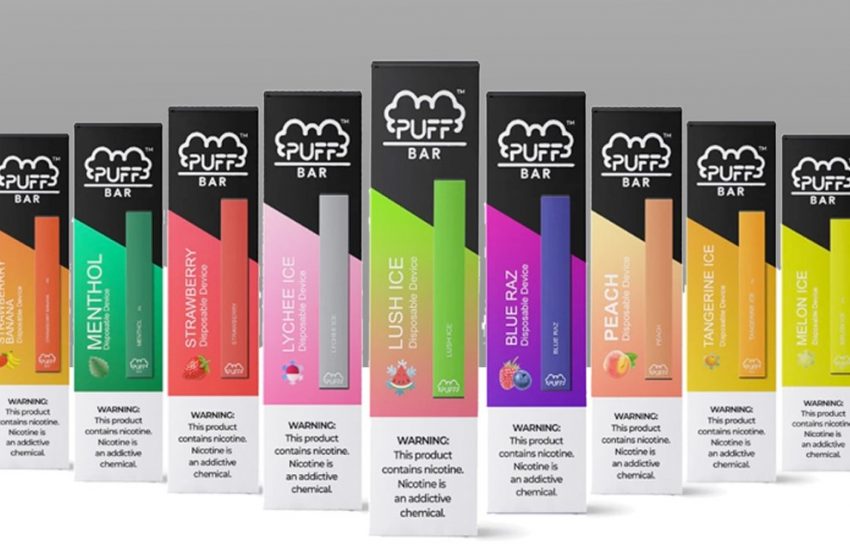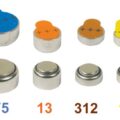The Puff Bar is a tiny disposable pre-filled vape containing smooth salt nicotine e-liquid. More than 58 million e-cigarette products were sold in the U.S. (not including those sold in vape shops or online) in 2015, 19.2 million of which were disposable e-cigarettes. A 2014 study found that none of the surveyed e-cigarette packages contained disposal instructions.
Last year the FDA notified companies, including puff bar, to remove flavored disposable e-cigarettes and youth-appealing e-liquids from market for not having required authorization
The statement read “Today, the U.S. Food and Drug Administration issued warning letters notifying ten companies, including Cool Clouds Distribution Inc. (doing business as Puff Bar), to remove their flavored disposable e-cigarettes and youth-appealing e-liquid products from the market because they do not have the required premarket authorization. These new actions are part of the FDA’s ongoing, aggressive effort to act against illegally marketed tobacco products amid the public health crisis of youth e-cigarette use in America. The agency is particularly concerned about the appeal of flavored, disposable e-cigarettes to youth and continues to monitor all available data.
“The FDA continues to prioritize enforcement against e-cigarette products, specifically those most appealing and accessible to youth,” said FDA Commissioner Stephen M. Hahn. “We are concerned about the popularity of these products among youth and want to make clear to all tobacco product manufacturers and retailers that, even during the ongoing pandemic, the FDA is keeping a close watch on the marketplace and will hold companies accountable.”
E-cigarettes and vape pens are essentially the same type of device. They have a battery that powers a heating element or “atomizer” that vaporizes “juice” containing nicotine or other substances so that it can be inhaled. There is no standard type of device. The batteries and juice cartridges/tanks/pods come in a variety of colors, shapes and sizes.
How they work
Broadly speaking, e-cigarettes have three main components: a cartridge that holds the flavored nicotine “vaping” solution, a heating element, and a lithium ion battery. The user draws on the e-cigarette as she might a conventional smoke. This activates a microprocessor that modulates the heating element, vaporizing the solution, and thus producing a flavored nicotine aerosol that provides a sensation akin to smoking when inhaled.
How e-cigarettes pollute
Conventional cigarette butts comprise approximately 38 percent of litter worldwide; and conventional cigarette filters are made of cellulose acetate, which takes about 12 years to biodegrade into its more ecologically benign constituents. So e-cigarettes are doubtless more eco-friendly than their conventional counterparts. But two “vape” components—the cartridge and the lithium ion battery—require hazardous waste removal.
How To Dispose Of Puff Bar
A main question public health regulators must face is: How are these new devices being disposed of? Are e-cigarettes being thrown away carelessly, like cigarette butts? Or disposed of in special electronic waste facilities, like smartphones? Preliminary results from litter pickups give mixed results. Currently there is no legal way to recycle them in the U.S.
Once expended, “vape” cartridges that held the flavored nicotine solution are typically discarded. However, without proper hazardous waste disposal, cartridges with residual solution pose a threat to domestic pets and wildlife, should the residual nicotine find its way into the environment, and even to children, should they find the expended cartridges and play with them.
On the consumer level, many e-cigarette manufacturers and vendors nowadays offer recycling programs, with the incentive of discounted or free products for so many “vapes” returned for reclamation. This is an easier path to eco-friendly behavior than doing it yourself.
According to most authorities, the proper disposal of e-cigarette cartridges requires removing the filler material, rinsing it under running water until all nicotine residues are removed, and then wrapping it in a scrap of biodegradable material. The cartridge itself should be similarly rinsed and then sealed with its original plug. Only then can it all be discarded as you would any other plastic waste.
For commercial and industrial enterprises, many jurisdictions stipulate that any discarded waste containing any concentration of nicotine requires hazardous waste management, and the rules can be severe. For example, in Minnesota, there is no minimal amount or concentration of nicotine-containing material that is exempt from regulation, and specified e-cigarette waste includes but isn’t limited to:
- Vaping liquid itself
- Shipping or storage containers for e-cigarette cartridges
- Used e-cigarette cartridges that have not been triple-rinsed
- Waste water from triple-rinsing e-cigarette cartridges
- E-cigarettes themselves
Disposing of “vape” lithium ion batteries
For retail consumers, the EPA doesn’t regulate the disposal of batteries in small quantities, although local jurisdictions might have specific rules for electronic waste disposal. This is because it’s dangerous to toss lithium ion batteries into a trash or recycling bin. How so?
Once in the back of a refuse or recycling truck, surrounded by dry paper and cardboard, pressure and heat can cause lithium ion batteries to spark, causing a rolling inferno. In fact, lithium ion batteries are one of the leading causes of recycling-truck fires.
According to their manufacturers, safe disposal of lithium ion batteries requires ensuring that they’re fully discharged and cooled, then submerging them in cold saltwater for two weeks—covered securely with a lid—before wrapping them in newspaper and placing them in the trash.
Again, the easier path is to take advantage of recycling programs offered by e-cigarette manufacturers and vendors. Alternatively, you can check with your municipality regarding guidelines for electronic waste disposal; or you can visit one of the many electronic retail stores that offer battery recycling as part of their brand (e.g. Best Buy). SEE: Does Nicotine Show Up On A Drug Test and Young People Still learning How to Recharge A Puff Bar







